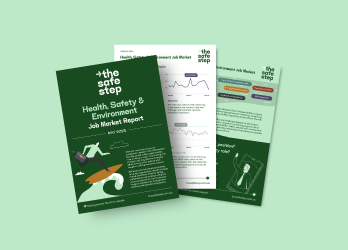HSE Community Insights - Megan Hopkins
Page Published Date:
September 30, 2021
Megan Hopkins, Group Manager OHS & Wellness at St John of God Healthcare shares some of the impacts 2021 has had on the organisation and what opportunities exist for 2022. Watch the video below to learn more, or continue scrolling to read the key take-outs.
Think Safe: A focus on wellness
The pandemic has created an overwhelming sense of tiredness amongst many Australian healthcare workers. Increased sick leave and greater reliance on agency workforce are two indicators of the strain being felt.
To combat burn-out and fatigue St John of God Healthcare has undertaken an organisation-wide focus on wellness. The priority being to get workers to care for themselves, in order to be able to care for others.
“Wellness is multifaceted,” says St John of God Healthcare’s Group Manager OHS & Wellness, Megan Hopkins. “It needs to be constant in our messaging and constant in our consciousness”.
Some of the wellness measures in place to support workers include:
- A mental health first-aid network comprising of around 250 people
- Pastoral care service workers
- An EAP program that looks after managers and their teams
- Wellbeing champions within the organisation
- Support sessions run by a mental health CEO
- Online articles addressing mental health, healthy eating, exercise, sleep and all the basics of keeping well
- Bespoke responses, tailored to new/specific situations within the organisation as they arise
Work Safe: Getting respirators right
PPE has been a key issue for St John of God Healthcare since the COVID pandemic began. The organisation’s safety focus for 2021 has been respirator fit.
“The great thing about this project is that ensuring people are provided with the right equipment and a sense of safety,” advises Megan Hopkins. “The downside (and something we didn't anticipate or foresee) is those that don't get a fit... because sometimes people's faces do not fit the respirators. The anxiety that comes from that is huge”.
Getting respirator rollout right has involved:
- Understanding State health department guidelines and advice across three jurisdictions
- Ensuring practices are current, as circumstances change
- Testing thousands of high-risk workers for ‘best fit’ against six different types of respirators
- Developing pathways for workers who’s faces don’t properly fit respirators including redeployment to areas with a lower risk, or working from home.
Be Safe: Safety monitoring & measurement
As healthcare organisations navigate their way through the impact of COVID in our workplace, traditional approaches to monitoring safety need to change.
According to Megan Hopkins this might mean thinking outside the box, “Instead of reporting and recording, I don't know... percentage training records on manual tasks, we may need to refocus, manage and monitor the training on PPE and respirator use and infection control.”
Monitoring indicators for infection control is another key area of concern for workplace safety. “Flags and indicators might be such things as sick leave; number of COVID cases in our community; number of COVID cases in our hospitals; number of workers stood down and what does that do by default, by rising risk in other areas."




